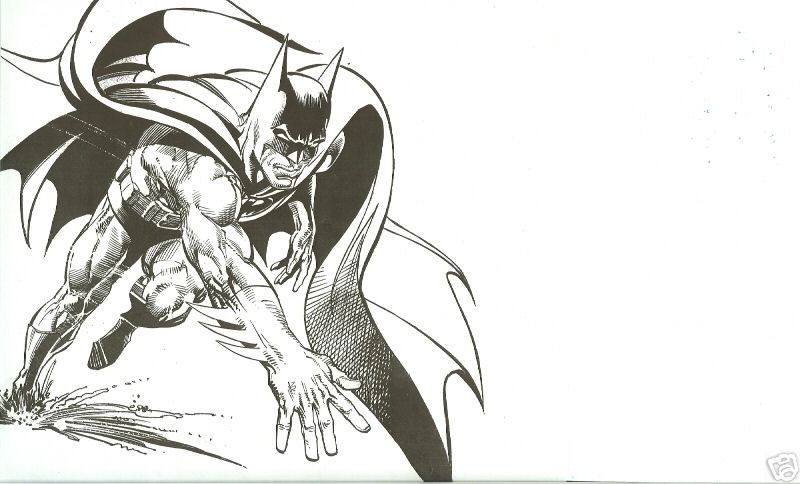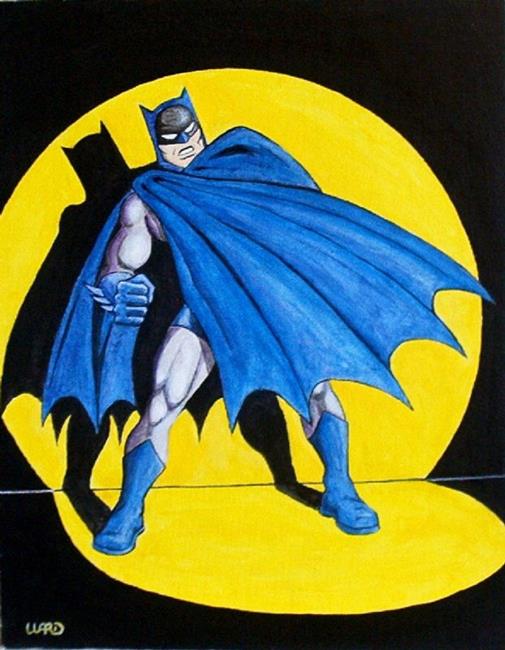Quelle:
Herald Scotland
[h=1]The 50 greatest graphic novels of all time[/h]
 Teddy Jamieson
Teddy Jamieson
Senior Features Writer
Sunday 18 August 2013
This is now, finally, the age of the graphic novel.
Image from Persepolis
The humble comic-strip can trace its origins to Hogarth and the painters of Japan's Edo period, but for most of the 20th century it was regarded as a second-rate pulp form.
That reputation has changed dramatically in recent years. Now, the graphic novel (a catch-all term at best) has embraced Pulitzer Prize-winning memoirs, hard-hitting journalism and astute social commentary. Cartoonists get nominated for the Costa Prize and the Edinburgh International Book Festival has a whole strand - Stripped - dedicated to graphic fiction.
So we thought we'd ask cartoonists, novelists, critics, publishers, journalists, comic historians, comedians and the odd musician what books should be in everybody's library.
Here are the 50 graphic novels you need to read.
50 Heavy Liquid, Paul Pope (1999)
Day-after-tomorrow sci-fi drawn with a spidery flair and dynamism.
49 Sin City, Frank Miller (1993)
Morally dubious, artistically thrilling. Mickey Spillane on drugs.
48 Barefoot Gen, Keiji Nakazawa (1973)
A harrowing account of Hiroshima as told by one of its survivors.
47 The Arrival, Shaun Tan (2006)
Australian cartoonist Tan's wordless fable tells the story of the immigrant experience in dusty black and white.
46 Tamara Drewe, Posy Simmonds (2005)
Simmonds's contemporary take on Hardy's Far From The Madding Crowd.
44= Goliath, Tom Gauld (2012)
The story of David and Goliath, as told from the giant's perspective. Bittersweet comedy from the Scottish cartoonist.
44= Blacksad, Juan Diaz Canales and Juanjo Guarnido (2002)
Raymond Chandler via Walt Disney, with a feline private eye.
43 Summer Blonde, Adrian Tomine (2002)
Generation X disaffection laid down in crisp, clean lines.
42 Alec: The Years Have Pants (2009)
A monster compilation of Scots expat Eddie Campbell's autobiographical comics. A woozy, boozy life story.
41 Fluffy, Simone Lia (2003)
The story of a baby rabbit, this plays with cuteness and whimsy but never feels sickly sweet.
40 The Gigantic Beard That Was Evil, Stephen Collins (2013)
Collins's darkly humorous fable about order and chaos via beardiness.
39 Krazy Kat (1913-1944)
George Herriman's scratchy, funny, beautifully idiosyncratic comic strip was loved by Picasso and the poet EE Cummings.
38 Everything We Miss, Luke Pearson (2011)
The story of the end of a relationship is both intimate and cosmic in scale.
36 = It Was The War Of The Trenches, Jacques Tardi (1982)
Life in the trenches caught by the French cartoonist in horrifying detail.
36 = Blankets, Craig Thompson (2003)
Thompson's memoir takes on Christian fundamentalism, family ties and erotic love over 600 gorgeously rendered pages.
35 The Lagoon, Lili Carre (2008)
Family secrets and watery monsters. "No other comic I've read has had such a well-defined use of atmosphere or effective use of sound," says cartoonist Luke Pearson.
34 The Preacher, Garth Ennis and Steve Dillon, (1995-2000)
Gross-out laughs, graphic violence and religion. Not for the faint-hearted.
33 The Complete Calvin And Hobbes, Bill Watterson (2005)
The best comic strip ever? Certainly the funniest.
32 Y: The Last Man, Brian K Vaughan and Pia Guerra (2002-2008)
The story of the last man alive in a world of women. Not a sex comedy.
31 My New York Diary, Julie Doucet (1999)
Doucet's New York memoir takes in sex, a suicide attempt and dirty socks. Life retold as the blackest of black comedies.
30 Buddha, Osamu Tezuka (1972-1983)
This biography of Buddha is an example of the ambition and sheer strangeness of manga.
29 Gemma Bovary, Posy Simmonds (1999)
An exquisite example of Simmonds's eye for detail and ear for dialogue.
28 The Nikopol Trilogy, Enki Bilal (1980-1992)
Dystopian science fiction bande desinee full of blue-haired girls and Egyptian Gods.
27 Dockwood, Jon McNaught (2012)
McNaught's patient, hushed draughtmanship and storytelling captures the poetry of everyday lives.
26 Nelson, Various Artists (2012)
Some 54 British cartoonists take it in turns to tell the story of the life of one woman from her birth to the present day. A giddy, poppy delight.
25 A Contract With God, Will Eisner (1978)
God, death and poverty in a 1930s New York tenement.
24 Gus And His Gang, Christophe Blain (2007)
In which the French cartoonist recreates the Wild West as a place of slapstick farce.
23 Tintin: Moon Adventure, Hergé (1953-1954)
Binding together two adventures, Destination Moon and Explorers On The Moon, Herge takes Tintin into space.
22 Fun Home, Alison Bechdel (2006)
The American cartoonist recounts her relationship with her father Bruce. A story of gay life then and now.
21 Pyongjang, Guy Delisle (2007)
A graphic travelogue about one of the most secretive societies in the world, North Korea.
20 Corto Maltese: Ballad Of The Salty Sea, Hugo Pratt (1967)
The first in a series of adventure stories that stand out for their historical accuracy and Pratt's handsome artistry.
19 Days Of The Bagnold Summer, Joff Winterhart (2012)
Winterhart's story of a mother and her metalhead son is one of the funniest and sweetest accounts of family life.
18 Asterios Polyp, David Mazzucchelli (2009)
Mazzucchelli started off drawing Batman comics before moving on this graphically innovative life story of a self-important architect, as told by his dead twin brother. "The kind of high-end intellectual pop that comics can do really well," says cartoonist Stephen Collins.
17 Building Stories, Chris Ware (2012)
Ware's most recent graphic novel comes in 14 different parts. Whatever order you read it in, this story of life in a Chicago apartment block will still break your heart.
16 It's A Good Life If You Don't Weaken, Seth (1996)
Canadian cartoonist Seth's graphic fiction is soaked in a nostalgia for a romanticised past. "When I picked this up in my early twenties it opened up my mind in terms of what words and pictures can do," says illustrator and novelist Leanne Shapton.
15 The Incal, Alejandro Jodorowsky and Moebius (2011)
A collaboration between France's greatest artist of the future and the cult film director of El Topo resulted in this mad, visionary French space opera from the 1980s.
14 Epileptic, David B (1996)
A memoir of two brothers, a story of illness and childhood imagination and an inky fever-dream of a book.
13 The Nao Of Brown, Glyn Dillon (2012)
Buddhism, OCD, alcoholism. A painted love story, a thing of beauty.
12 Batman: The Dark Knight Returns, Frank Miller (1986)
The superhero recast as Dirty Harry in this wild, fierce, satirical take on the genre.
11 Akira, Katshuiro Otomo (1982-1990)
Set in Neo Tokyo in 2030, Otomo's huge, sprawling SF epic introduced Japanese manga to the west.
10 Palestine, Joe Sacco (1993)
The cartoonist as war-zone reporter. Joe Sacco's account of his visit to the Occupied Territories at the start of the 1990s is a powerful example of the potential of comic strips. Art Spiegelman said of Sacco's work: "In a world where Photoshop has outed the photograph as a liar, one can now allow artists to return to their original function - as reporters."
9 V For Vendetta, Alan Moore and David Lloyd (1982-1989)
Originally conceived during the political chill of Thatcherism, Alan Moore extrapolated a political future that saw Britain slide into fascism and then set against it anarchist "hero" V who begins his attack on the state by blowing up the Houses of Parliament. Complemented perfectly by the controlled grittiness of David Lloyd's art, this is the comic book as treatise on political belief system. Has gained real-world traction in recent years as members of Occupy have adopted V's Guy Fawkes mask.
8 Watchmen, Alan Moore and Dave Gibbons (1987)
Does the ending spoil it? Moore's intricately planned, complex reboot of the superhero genre may ultimately trip up over the pulpy melodrama of its climax. But this was a game-changer for graphic novels, opening reader's eyes to the form's potential visual and verbal literacy. Also contains possibly the best pirate story ever written.
7 Locas, Jaime Hernandez (1982-2013)
"Hernandez is North America's greatest living comics creator," says cartoonist Woodrow Phoenix. "He wears his command of every facet of sequential narrative so lightly that while you are seduced by his gorgeous drawings, you don't notice how densely and subtly told his stories are." And that's possibly underselling it. Hernandez's 30-year exploration of the life of Latina Maggie Chascarillo - from punk chica to middle-aged woman - is simply one of the greatest achievements in any form in those years.
6 From Hell, Alan Moore and Eddie Campbell (1999)
Moore's take on the Jack the Ripper story. Aided by Eddie Campbell's scratchy art, it's also an examination of the misogyny of Victorian values, an occult history and a psychogeographic exploration of London. A potent, perverse, black hole of a book that exerts a malign pull.
5 Ghost World, Daniel Clowes (1997)
The story of American teenagers Enid Coleslaw (it's an anagram) and Rebecca Doppelmeyer, Clowes's most successful work is an outsider's account of what it is to be an outsider, the fuzzy borderline between adolescence and adulthood, and the strangeness of suburbia. "Perfectly captures the weirdness and boredom of teenage life," suggests cartoonist Tom Gauld.
4 Black Hole, Charles Burns (2005)
If David Lynch did teen romance ... Charles Burns recasts adolescent sexuality as the stuff of sci-fi melodrama while taking Hergé's clean-line drawing style to the dark side. The result is creepily beautiful. "Black Hole is an unsettling book," says cartoonist Will Morris. "It teases your nerves and at times I'm sure I even felt a slight nausea."
3 Jimmy Corrigan, The Smartest Kid On Earth, Chris Ware (2000)
Eight years in the making, Ware's graphic novel may on the page look like the most formally precise title in this list, yet that perfection can be misleading. It moves so easily between the past and the present, reality and imagination that you can get lost in its labyrinth. "Sophisticated like free jazz," suggests Metraphrog cartoonist John Chalmers. "It changed the way I looked at the world, at comics, the way I drew," adds Stephen Collins.
2 Maus, Art Spiegelman (1991)
Possibly the most important title in our countdown. If Watchmen opened people's eyes to what you could do with superheroes, Spiegelman's memoir recalibrated what people expected from comics entirely. The son of a holocaust survivor, Spiegelman's graphic memoir tells his father's story. In Maus the Jews are mice and the Nazis are cats, a subversion of Nazi propaganda. The result, a Pulitzer Prize winner, is as good as comic books get. But it's not the winner.
1 Persepolis, Marjane Satrapi (2000)
In 1995, Marjane Satrapi was given a copy of Maus as a birthday present. She had no idea that you could tell stories in this way. And so she decided to tell hers. The result is this memoir of a punky, sarky girl in a veil in post-revolutionary Iran. It uses minimalist, at times childlike art to reveal a world - Tehran in the Khomeini years - most of us don't know much about, in all its complexity. "Probably the first comic I read and, like a lot of girls, it was the one that really got me into comics," says cartoonist Isabel Greenberg. If you haven't read a graphic novel before, start here.









 )?
)?







 )...
)...